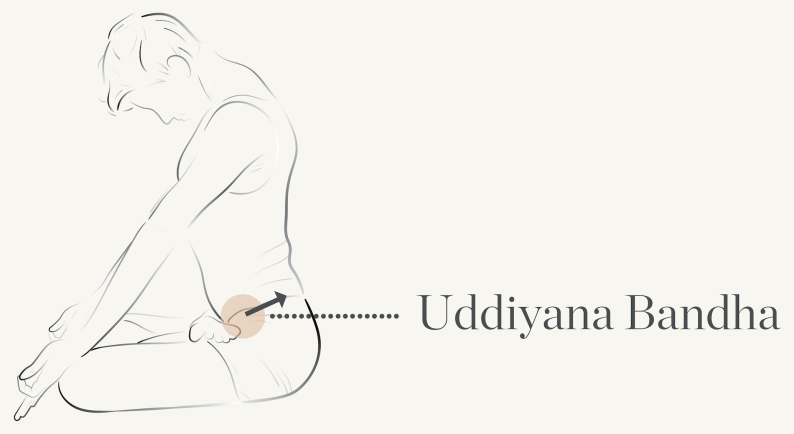Uddiyana Bandha (abdominal lock)
- Prāṇa Awakening - Mahendra ji

- Jan 16, 2021
- 3 min read
Updated: Mar 6, 2022
For the basic information of the bandhas, read this article: bandhas.
In Sanskrit, Uddiyana means flying up, rising up, moving up.
Bandha is a Sanskrit word that means to hold, tighten or lock.

This practice involves a physical lock applied on the body, causes the diaphragm to rise towards the chest. Another reason for the name is that the lock helps to direct prana into sushumna nadi so that it flows upwards to sahasrara.
Because of two previous reasons, the name of this practice is Uddiyana bandha.
Although, we have to pull the belly muscles towards the spine but purpose is to allow the pranic flow of the energy moving upward through the sushumna nadi.
Once a practitioner will get able to rise the prana in the sahasrara, even for few moments, the tranquility/introversion of the mind will be experienced immediately.

According to Hatha Yoga Pradipika 3:55
By which the prana vayu restricted in susumna flies in it, that is the reason that yogis declare this by the name uddiyana.
Technique:

According to Gheranda Samhita 3:12/13
Contract the upper abdomen (above the navel) towards the back equally; as a result the great bord (prana) rises upward. It is called uddiyana bandha. It is the lion which challenges the elephant of death. Uddiyana bandha is the foremost bandha. One attains liberation easily by its practice.
Sit in any comfortable meditative asana.
Make your knees firmly grounded.
Place the palms on your knees.
Relax your whole body.
Inhale deeply through the nostrils. Exhale fully through the mouth with little bit force, expel the air as much as you can, empty the lungs.
Just after that, apply the chin lock.
Fix the palms on the knees, elbows straight, raise the shoulders.
In this position, pull the belly muscles towards the spine and then pull up.
Hold this lock as long as you can without any discomfort.
Then, very slowly, release the chin lock, abdomen lock. Inhale slightly deeper and with long exhalation, relax your whole body.
Take rest with 3-5 natural breaths. This is one round.
Duration:
Beginners should start their practice with 3-5 rounds and later on slowly increase the number.
Awareness:
On the region of the abdomen or manipura chakra.
Benefits:
Stimulates the digestive fire and makes the samana prana strong.
Provides a good massage to all the abdominal organs.
Strengthens the internal organs.
Stimulates the function of pancreas and liver.
Helps for the proper functioning of the digestive and excretory system.
In the final position, the diaphragm muscles moves up, so, that it gives a good massage to the heart and lungs.
Helps for the proper circulation of the blood.
Activates the solar plexus chakra, so it's a good practice for all the kapha disorders.
Releases the anxiety, tensions, lethargicness,...
Energizes the whole body and gives the soothing effects on the nervous system.
In Kundalini and Tantra yoga, this bandha is used to break/pierce the vishnu granthi.
Contra-indications:
People suffering for acidity, ulcer, diaphragmatic hernia, high blood pressure, heart disease, glaucoma should avoid this practice or ask your teacher.
Don't practice during the period or pregnancy.
Notes:
Never force yourself while you practice the bandhas. Any moment if somebody is not feeling well, you should stop immediately.
Your stomach, bowels and bledder must be empty.
Agnisara kriya must be practiced before attempting uddiyana bandha. It brings control over the abdominal muscles.
Uddiyana bandha is an advance practice of pranayama, so practice in the guidance of a teacher.
•••
To receive weekly our new articles about Yoga, Ayurveda you can subscribe to the Newsletter at the end of this page.
To know more about next Online classes: Click Here.
Hari 🕉!!!




Comments